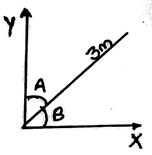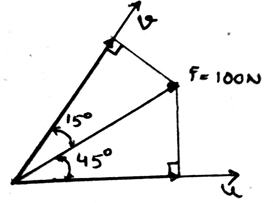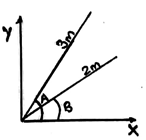This set of Engineering Mechanics Multiple Choice Questions & Answers (MCQs) focuses on “Frictional Forces on Flat Belts”.
1. ____________ is the phenomena that resist the movement of the two surfaces in contact, in some of the cases it could be the belts and the rolling cylinders.
a) Friction
b) Motion
c) Circular movement
d) Rotation
View Answer
Explanation: The friction is the phenomena that define that there is a resistance which is present there between the two surfaces. The two surfaces are in contact and the friction applies at that surface only, resisting the motion of the surface.
2. The frictional force in the belts always acts ____________ to the surface of the application of the friction.
a) Tangential
b) Perpendicular
c) Parallel
d) Normal
View Answer
Explanation: The friction is the phenomena that defines that there is a resistance which is present there between the two surfaces. This friction is applied tangentially to the surfaces in contact. Thus the main thing is that the forces on both of the surfaces act as a tangential to each other.
3. Vector shown in the figure below has a length of 3m and the angles shown A and B are 60 and 30 degrees each. Calculate the X-axis and Y-axis components.
a) 2.59m and 1.50m respectively
b) 1.50m and 2.59m respectively
c) 3cos60 and 3sin30 respectively
d) 3sin60 and 3sin30 respectively
View Answer
Explanation: The sine and the cosine components of the given vectors considering angle B as the only angle of consideration come 1.5m and 2.59m.
4. What is B in the equation T2 = T1eµB ?
a) Angle of the belt to surface contact in radians
b) Angle of the belt to surface contact in degrees
c) Angle of the belt in radians
d) Angle of the belt in degrees
View Answer
Explanation: For solving of the unknown tension in the belts, T2 = T1eµB equation is used. In this, the R.H.S tension is the maximum tension of the two tensions. While the other one is the smaller one. And the µ is coefficient of friction between the belt and the surface. And the B is the angle of belt to the surface in radians.
5. Dry friction in the belt is also called ___________
a) Column Friction
b) Coulomb Friction
c) Dry column friction
d) Surface friction
View Answer
Explanation: The dry friction is acted upon the surfaces. Whatever may be the surfaces. And they are tangential to each other. As we know the friction is the phenomena that defines that there is a resistance which is present there between the two surfaces. The dry friction is also termed as the Coulomb friction as it was given by C.A. Coulomb.
6. For making the equilibrium equations for the belt the normal forces that are being acted over them are in which direction in the free body diagrams?
a) Vertically Upward
b) Vertically Downward
c) Horizontally Right
d) Horizontally Left
View Answer
Explanation: As the loads are being acted in the downward direction. Thus to make the forces balance, the normal forces act in the vertically upward direction. As we know that when there is no lubricating fluid present between the surfaces in contact, the dry friction occurs. This friction magnitude is taken out from these normal forces.
7. Which one is not the condition for the equilibrium in free body diagram for the belts as considered for calculation of the normal forces, consider all forces to be straight and linear?
a) ∑Fx=0
b) ∑Fy=0
c) ∑Fz=0
d) ∑F≠0
View Answer
Explanation: For the equilibrium in the three dimensional system of axis we have all the conditions true as, ∑Fx=0, ∑Fy=0 and ∑Fz=0. Also, we have the summation of the forces equal to zero. Which is not a non-zero value.
8. We first make equilibrium equations of the belts by considering all the three dimensional forces acting on the section chosen and then the free body diagram is made and solved.
a) The first part of the statement is false and other part is true
b) The first part of the statement is false and other part is false too
c) The first part of the statement is true and other part is false
d) The first part of the statement is true and other part is true too
View Answer
Explanation: We first make the free body diagram and then we make the equilibrium equations to satisfy the given conditions. This helps us to solve the question easily. As this reduces the part of imagination and increases accuracy too.
9. We show the net forces acting on the belts with the help of __________ forces.
a) Rotational
b) Linear
c) Helical
d) Resultants
View Answer
Explanation: The net forces acting on the body is shown with the help of the resultant forces. This is because the resultant forces have the sum of all the forces which are acting in the direction which is same. Thus the resultant forces are used to show the net forces acting in the body.
10. There are mainly two types of forces which are being stated in the free body diagram of the belts, they are generally the resultant forces which are being acted over the body over which the belt is rolling. Which are they?
a) Normal and Frictional
b) Normal and Vertical
c) Vertical and Frictional
d) Normal and Fractional
View Answer
Explanation: The net forces acting on the body is shown with the help of the resultant forces. There are two types, first the frictional and the second is normal. This is because the resultant forces have the sum of all the forces which are acting in the direction which is same.
11. Determine the magnitude of the projection of the vector force F = 100N acting over a particular point on the belt, onto the v axis, from the figure given below.
a) 96.6N
b) 60N
c) 100N
d) 70.7N
View Answer
Explanation: The component of the force in the v axis, it is equal to 100cos(15˚). This is the application of the triangle over the figure. Try to resolve the components of the given force. It will be easy. This is one of the simplest examples of solving for the forces acting over the belts.
12. The solving for the unknown forces in the belts requires vector math. So if a vector is multiplied by a scalar in the belt system of forces then_________
a) Then its magnitude is increased by the square root of that scalar’s magnitude
b) Then its magnitude is increased by the square of that scalar’s magnitude
c) Then its magnitude is increased by an amount of that scalar’s magnitude
d) You cannot multiply the vector with a scalar
View Answer
Explanation: If a vector is multiplied by a scalar then its magnitude is increased by an amount of that scalar’s magnitude. When multiplied by a negative scalar it going to change the directional sense of the vector. Vector math is unchanged throughout.
13. All the vector quantities in the solving of the unknown in the belt force system obey _____________
a) Parallelogram law of addition
b) Parallelogram law of multiplication
c) Parallelogram law of addition of square root of their magnitudes
d) Parallelogram law of addition of square of their magnitudes
View Answer
Explanation: All the vectors quantities obey parallelogram law of addition. Two vectors A and B (can be called as component vectors) are added to form a resultant vector. R = A+B.
14. For solving of the unknown tension in the belts, which of the following equation is used?
a) T2 = T1eµB
b) T1 = T2eµB
c) T2 = T1eB
d) T2 = T1eµ
View Answer
Explanation: For solving of the unknown tension in the belts, T2 = T1eµB equation is used. In this, the R.H.S tension is the maximum tension of the two tensions. While the other one is the smaller one. And the µ is coefficient of friction between the belt and the surface.
15. Shown as in the figure below, A=60 degree and B=30 degree. Calculate the total length obtained by adding the x-axis component of both the vectors.
a) 3.23m
b) 4.35m
c) 2.50m
d) 1.5m
View Answer
Explanation: After getting the cosine components of the given vectors we obtain the total length of the x-axis components to be 3cos60 + 2cos30 = 3.23.
Sanfoundry Global Education & Learning Series – Engineering Mechanics.
To practice all areas of Engineering Mechanics, here is complete set of 1000+ Multiple Choice Questions and Answers.
If you find a mistake in question / option / answer, kindly take a screenshot and email to [email protected]



